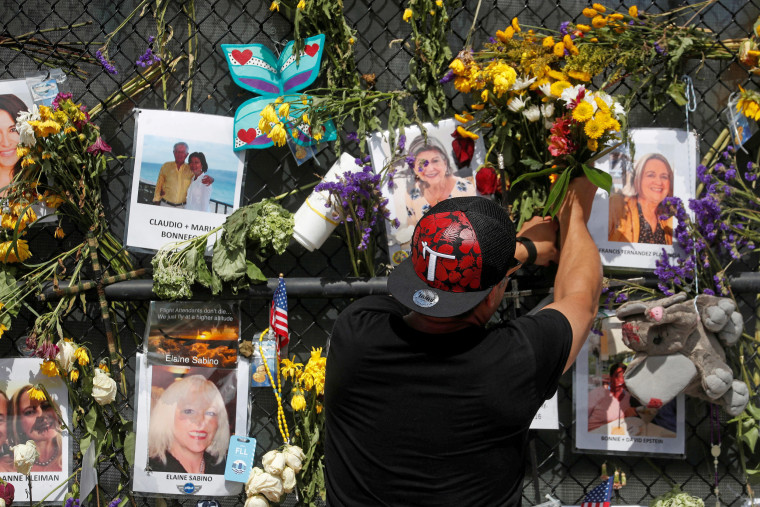The remains of four more people have been recovered from the rubble at the Champlain Towers South in Surfside, Florida, that partially collapsed last month, raising the confirmed death toll to 94 as officials said victim identification was growing more challenging the deeper crews dig into the debris.
Of the 94 confirmed dead, 83 victims have been identified, and 80 of those families notified, Miami-Dade County Mayor Daniella Levine Cava said Monday.
Police and the medical examiner are working "around the clock" to identify each victim, she said, but "recovery at this point is yielding human remains" as opposed to bodies, making the process more difficult.
Identifying the remains is "methodical, careful, and it does take time," Levine Cava said, adding that she recognized that waiting loved ones were "in anguish."

Angie Ambers, a forensic DNA expert and assistant director at the Henry C. Lee Institute of Forensic Science in Connecticut, told NBC News shortly after the collapse that the use of DNA technology would become even more crucial as the process of recovering victims dragged on.
Soft tissue, which makes visual identification and fingerprinting possible, can decompose, especially when exposed to the high heat and humidity of South Florida.
"This is where DNA testing will become an invaluable tool in the investigation," said Ambers, an associate professor of forensic science at the University of New Haven.
Detectives are also continuing to audit an ever-changing list of unaccounted for people, now at 22, Levine Cava said. Victims do not come off the unaccounted-for list until they are identified, she said.
The number of people accounted for is 220.
"The search continues until everyone trapped in the debris is pulled out," Surfside Mayor Charles Burkett said.
He said that while crews had to occasionally pause for weather overnight Sunday, they have made significant progress, reaching the underground parking area in some parts of the pile.
The vehicles there are "terrible damaged, evidencing the violence of the collapse," Burkett said.
The cause of the middle-of-the-night collapse June 24 is still unclear. Documents released after the collapse included a 2018 report that highlighted an engineer's concerns that the building had "major structural damage." The engineer said his findings showed that there was "abundant cracking" and crumbling in the parking garage.
Levine Cava has said that personal items recovered from the pile — such as identifying documents, jewelry, safes, firearms, religious items, cellphones, computers, photo albums and wallets — are being preserved and cataloged in hopes they can be returned to their owners or their families.
Crews are being so meticulous that they have found intact wine bottles and the business card and paintings of an artist that they were able to preserve for the family.
Officials have increased security at the site, as discussions get underway about how to memorialize it after the debris that was once 12 floors of building is all removed, Burkett said.
"Obviously, this has become more than a collapsed building site," he said. "It is a holy site, for lack of a better word."
